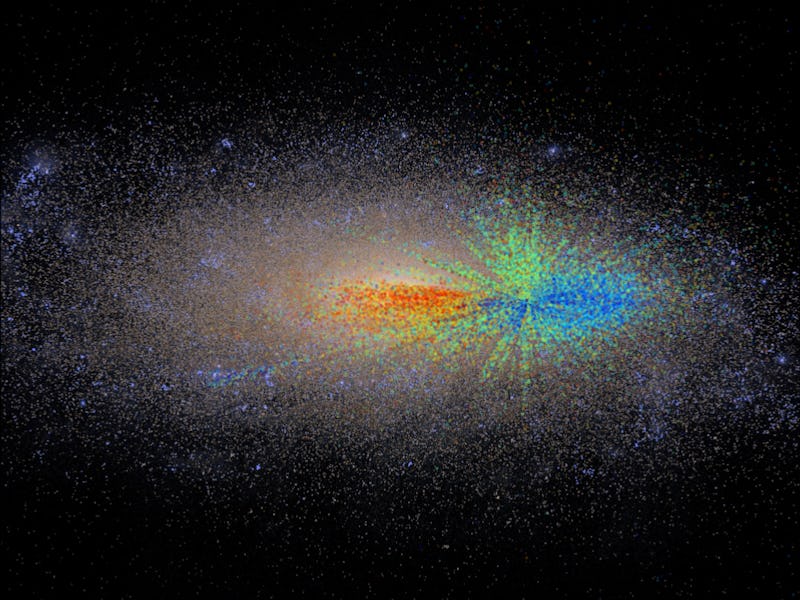New Milky Way 'Age Map' Shows How Our Galaxy Grew
This map shows that the galaxy grew from the inside out.

The era of galactic age-guessing is over. After perfecting two brand-new techniques for deducing the ages of the Milky Way’s red giant stars, scientists at the Max Planck Institute for Astronomy have created the first large-scale map of stellar ages in the Milky Way.
The study was presented at the 227th meeting of the American Astronomical Society today in Kissimmee, Florida, by lead author Melissa Ness, Ph.D..
In her work, she tells Inverse, she was looking “to let the data tell the story of how the Milky Way has formed, via the age structure that we can see across the disk.”
Age distribution for a sample of red giant stars ranging from the galactic center to the outskirts of the Milky Way.
By figuring out the ages of the stars in our home galaxy, she explained, she’s confirmed how it evolved: With most of the oldest stars in the middle of the galaxy and the youngest on the outskirts, it’s now clear that our galaxy grew “inside out.”
“The material which is accreted into the galaxy at later times stays out at larger radii, and material in the outer regions takes longer to settle and form stars,” she explains. Essentially, any new material ends up on the galaxy’s outer rim — hence the inverted growth.
Age distribution for a sample of red giant stars ranging from the galactic center to the outskirts of the Milky Way, analyzed by Melissa Ness and colleagues. The sample is embedded in a simulation of a Milky Way-like galaxy. Age is color coded, with the youngest stars shown in blue, the oldest stars in red, and middle-aged stars in green. The age distribution, including the obvious fact that the oldest stars are concentrated closer to the galactic center, confirms current models of galactic growth that have the Milky Way growing from the inside out.
Ness hopes that the new techniques for age-guessing she developed with co-author Marie Martig, Ph.D., will be useful in the fields of galactic archeology and chemical tagging. In these domains, she says, “precision abundances and stellar ages are key.”
An artist's rendition of Kepler spacecraft.
Ness uses the same raw data as other astronomers — collected by the APOGEE survey and NASA’s Kepler Space Telescope — but her tools for estimating the ages of the stars are completely new: By analyzing the red giants’ light spectrums, she estimated the ages of nearly 100,000 stars in our galaxy within a radius of 50,000 light years from the Milky Way’s center.
Analyzed side-by-side with data on the transformation of galaxies, the new data on stellar age could shed light on the genesis of the Milky Way.
“We can make comparisons of the data to high redshift observations of galaxies to determine which galaxies are the likely progenitors of our own,” she explains.